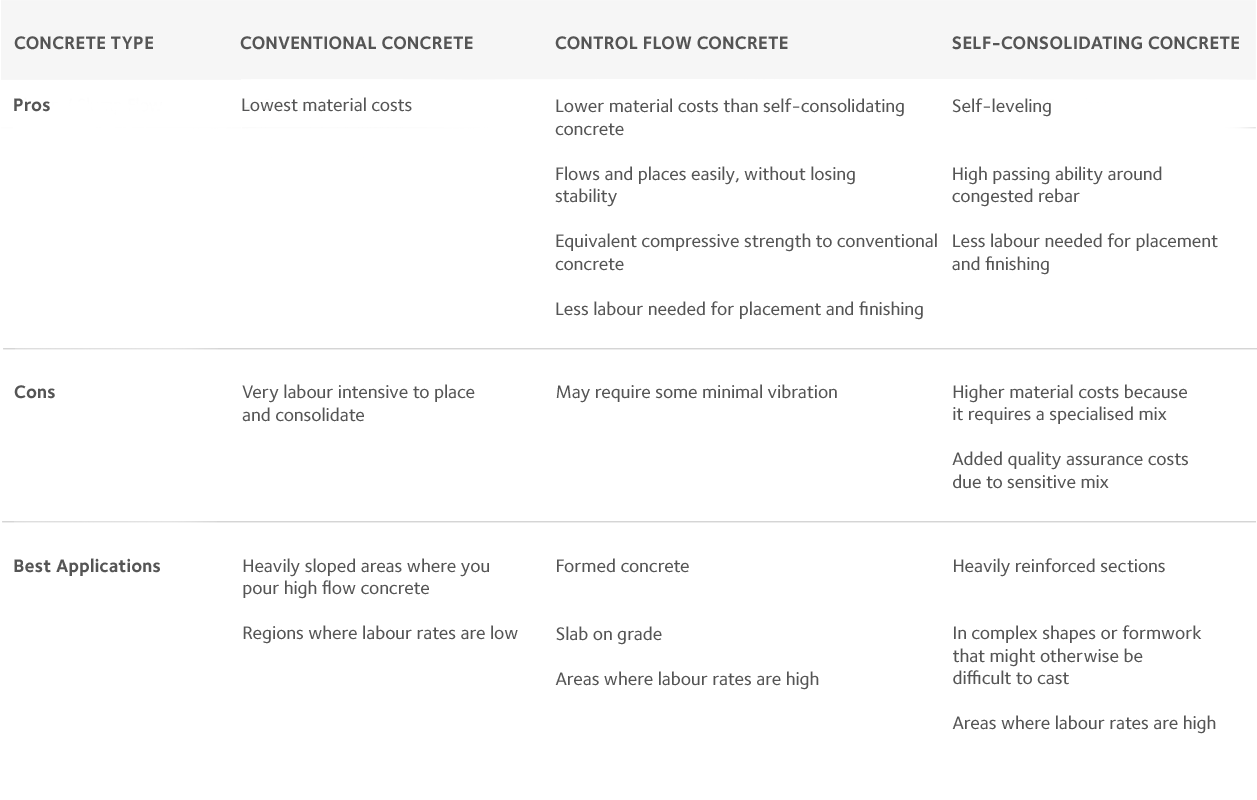What type of concrete is best for my project?

There’s been a lot of talk about the benefits of high flow concrete, but how do you know when to use it and when conventional concrete is sufficient? First, let’s define the different types of concrete.
- Conventional concrete: Normal slump concrete has been used successfully for decades, but can be difficult and labour intensive to place.
- Self-consolidating concrete: This is a specifically designed mix, typically containing higher cementitious contents and smaller size coarse aggregates. Self-compacting concrete mixes are typically more expensive, but require less labour than conventional concrete to place. Self-compacting concrete moisture tolerance can be sensitive, so you need to have sufficient quality assurance staff in the field to ensure the right consistency.
- Control flow concrete: This category of concrete bridges the gap between conventional concrete and self-consolidating concrete. Control flow concrete uses conventional mix designs, larger coarse aggregates and CONCERA™ water reducing admixture. Therefore material costs are lower than self-consolidating concrete.
Let’s look at the characteristics of each type of concrete.
Many factors need to be considered with choosing a specific concrete category. First, consider where the concrete will be used. For example, control flow concrete is ideal for most slab on grade and formed concrete applications, while self-consolidating concrete is advantageous for use in highly reinforced and very difficult to cast applications.
Additionally, when considering the price of each type of concrete, you’ll want to take into account the cost of the materials, as well as the cost of labour in the region. Since higher flowing concrete, like control flow concrete and self-consolidating concrete, significantly reduce the amount of labour involved with placing concrete, their benefits are even greater when they’re used in cities with high labour rates.
Pros and Cons of Different Concrete Types
Learn more about creating control flow concrete with CONCERA™ admixtures
Tags
- CONCERA™
- Concrete

